How to Move/Transfer Windows 11/10 to New Hard Drive (HDD/SSD) | 2022 Full Guide
Migrating Windows OS to another drive is a tough task for most Windows users. Fortunately, it can be easy and fast for all levels of Windows users to transfer Windows 10 to a new hard drive, whether it's an HDD or SSD, with the help of professional Windows 10 migration solutions as shown below.
This page covers a full guide for you to follow and move Windows 11/10 or other Windows OS to a new HDD/SSD with ease.
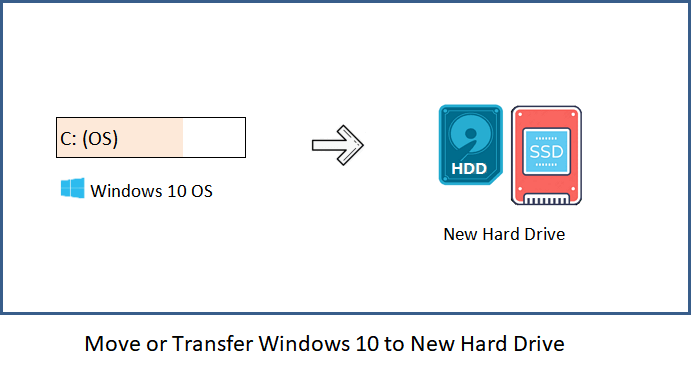
For an efficient solution, you can always trust the reliable OS migration feature in Qiling manager software as shown below. Learn how to do this on your own.
Also work to: Move everything from C to D drive, move program files x86to another drive, move OS with installed apps to a new disk.
Preparations: Make Everything Ready for Moving Windows 11/10
Before transferring Windows 11/10 OS, here are some preparation jobs that you should have done in advance.
1. Prepare a New Hard Drive - HDD/SSD
Before Windows 10 migration, you need to connect or install a new hard drive so to make sure that your computer can detect it correctly with the following tips:
Step 1. Prepare a new HDD/SSD and a SATA cable.
Note that space on the new hard drive/SSD must be bigger than the system C drive used space on the source disk.
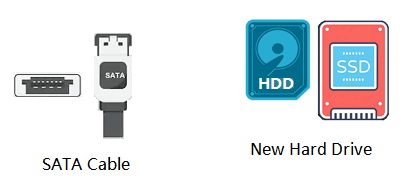
Step 2. Connect the new SSD/HDD to PC and initialize the disk.
Connect SSD/HDD to your PC via SATA and power cables > Locate and right-click the new disk in Disk Management > Select "Initialize Disk" > Set the disk as GPT or MBR (the same as source OS disk).
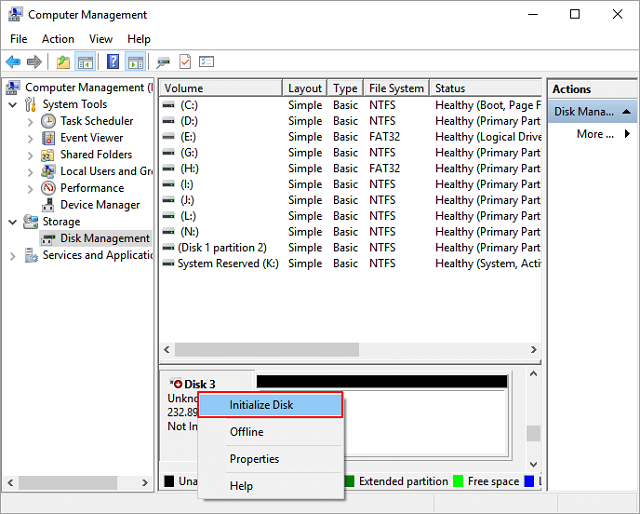
- Notice:
- If the destination disk has partitions and data on it, you should back up your disk/partition and data to another device first, then delete all partitions and continue.
2. Download A Reliable Windows 11/10 Migration Tool
To migrate OS to another new disk, you'll need a reliable OS migration tool for help. Here we collect two tools for you to try:
| Qiling OS Migration Tool - Solution 1 | Windows System Image Tool - Solution 2 |
|---|---|
|
|
Qiling Suggestion: To safely migrate or move your Windows 11/10/8/7 OS to another hard drive, Qiling partition manager software - Partition Master in Solution 1 is the best option for you.
- Qiling Partition Master -
Your Smart Windows 11 Update Disk Manager
- MBR to GPT Converter, Make Disk Ready for Windows 11.
- Migrate Windows 11 to New SSD in 1-Click.
- Handy to Extend orCombine Partitions in Windows 11.
- Clone and Upgrade Disks without Data Loss.
Solution 1. How to Transfer Windows 11/10 to a New Hard Drive Via OS Migration Tool
Duration: 25 minutes - 1 hour or so.
Support: OS migration on Windows 11/10/8/7/XP/Vista and Windows servers, big to small or small to big HDD/SSD.
To move Windows 11/10 to another new hard drive or SSD, follow through the next two phrases. You'll successfully transfer everything from the C drive to another disk without losing any data. Also, Windows and program reinstallations are not needed.
#Phrase 1. Transfer Windows 11/10 to a New Hard Drive (HDD/SSD)
Note:The operation of migrating OS to SSD or HDD will delete and remove existing partitions and data on your target disk when there is not enough unallocated space on the target disk. If you saved important data there, back up them to an external hard drive in advance.
Step 1. Select "System clone" from the tools page.
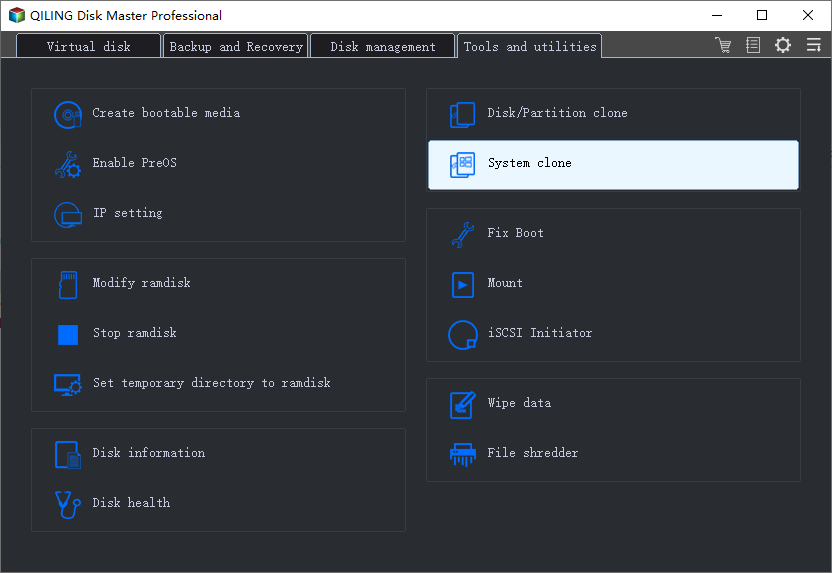
Step 2. The system partition will be selected by Automatically and click "Next".
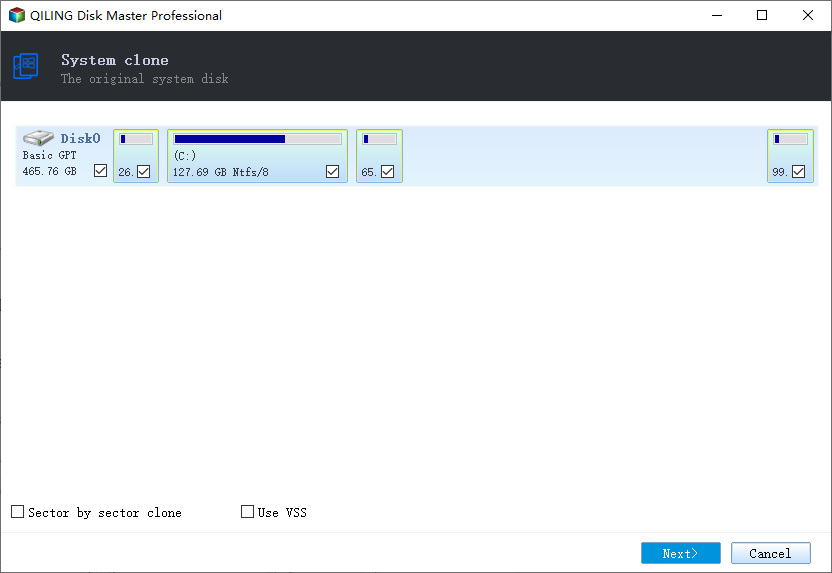
Step 3. Select the SSD or HDD as the destination disk and click "Next".
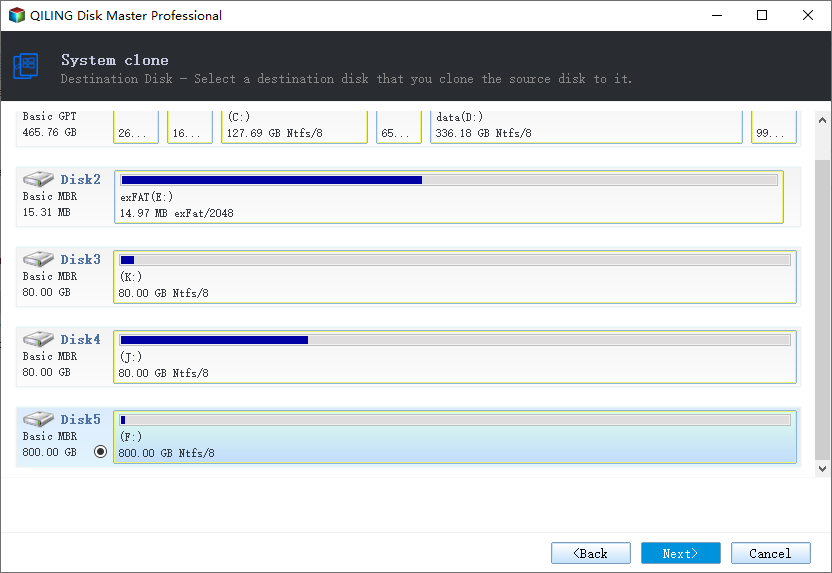
Step 4. Preview the layout of your target disk. You can also click the disk layout options to customize the layout of your target disk as you want. Then click "Proceed" to start migrating your OS to a new disk
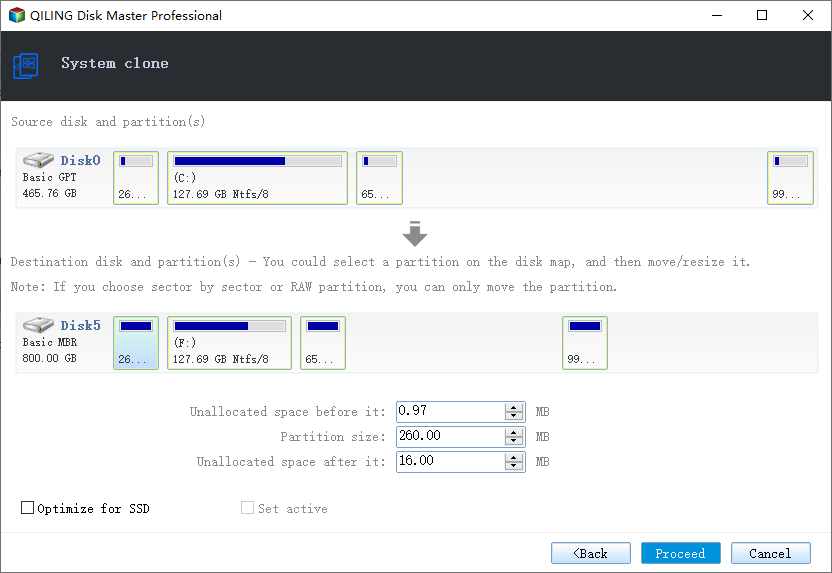
Step 5. Click "OK" after check warning message. The data and partitions on the target disk will be deleted. Make sure that you've backed up important data in advance. If not, do it now.
When the OS migration process finishes, you can move to the next phrase to set Windows 11/10 boot from the new disk.
#Phrase 2. Set Up Windows 11/10 to Boot from New Hard Drive
After the OS migration, you need to set up the computer to boot Windows 10 from the new hard drive. If you forget to do so, your computer will continue booting up from the old system disk.
Here are the steps to set the OS to boot from the new disk by changing its boot priority from BIOS:
Step 1. Restart PC and press F2/F12/Del to enter BIOS.
Step 2. Go to the Boot section, set PC to boot from the new hard drive.
Step 3. Save changes, exit BIOS, restart PC.
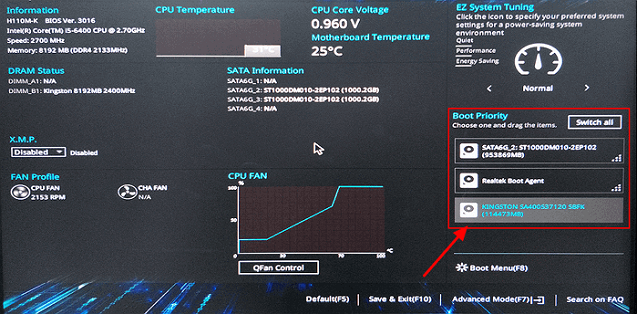
After this, you are able to log in to your account and use Windows 11/10 on the new hard drive or SSD successfully.
If you need to repartition the old hard drive or make full use of the space on both new and old hard drives, Qiling Partition Master with its partition Windows 10 features can help.
Solution 2. Transfer Windows 10 To Another HDD/SSD With Windows System Image Tool
Duration: 30 minutes - 1 and half an hour or so.
Support: OS migration on Windows 10, small disk to big SSD/HDD only.
Limites: New disk must be bigger than the original system disk space.
For some experienced Windows users, they may feel like running the Windows system image tool for the Windows 10 migration operation. Although free, yet it's still not a handy solution for most average Windows users.
If you insist on doing so, follow the step-by-step operations in the below 3 phrases:
#Phrase 1. Create Windows 10 System Image to An External Hard Drive
Step 1. Connect an empty external hard drive to your PC.
Step 2.Type Control Panel in the Search box and select to open it. Click "Backup and Restore (Windows 7)".
Step 3.Click "Create a system image", select the external USB drive as destination to save Windows 10 system image, click "Next" to continue.
Step 4.The System and System Reserved partitions will be selected by default, click"Next" to continue.
Step 5.Click "Start backup" to begin creating your current system image to the USB drive.
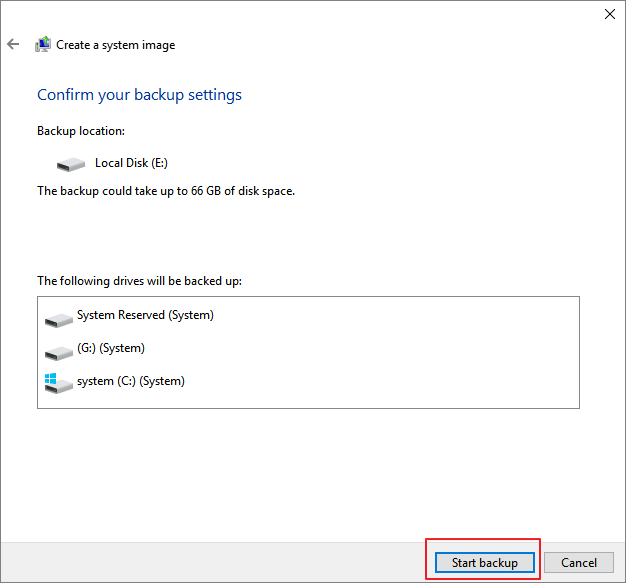
#Phrase 2. Create Windows Media Creation Tool
Step 1. Connect an empty USB flash drive (min 8GB) to PC.
Step 2. Download Windows 10 installation media and run it as an administrator.
Step 3. On the "What do you want to do?" interface, select "Create installation media for another PC", and select "Next".
Step 4. Choose the language, edition, and architecture (64-bit or 32-bit) for Windows 10.
Step 5. Select USB flash drive to use:
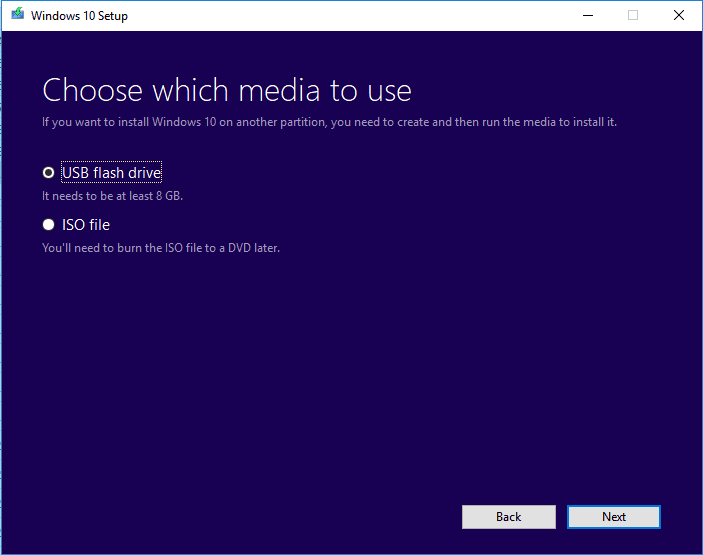
#Phrase 3. Restore and Move Windows 10 System Image to Another New Disk
Step 1. Connect both Windows 10 installation media and Windows image backup disk to your PC and reboot it.
Step 2. Press F1/F2/Del to enter BIOS and set the installation media as the boot drive.
Step 3. Reboot PC from Windows Installation Media, click "Repair your computer" on the Install Now window.
Step 4. Enter the Advanced options, click "Troubleshoot" and then select "System Image Recovery".
Step 5. Check "Select a system image" to bring up your Windows 10 system image disk and select it. Click "Next" to continue.
Step 6. Click "Exclude disks..." to exclude the original system disk, leaving the new HDD/SSD only. Click "OK" to confirm.
Step 7. Click "Next" to start the restoration process and wait for the restoration process to complete.
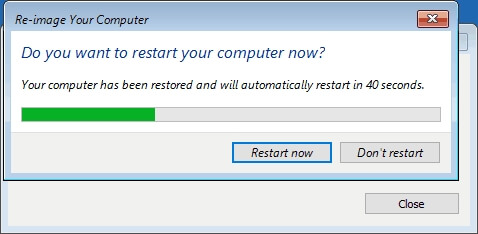
Once finish restoring Windows 10 image to the new disk, Windows 10 will restart and boot up.
If Windows 10 doesn't boot up, revert to Phrase 2 in Solution 1 to set the new disk as boot drive. You will be able to run Windows 10 on the new disk without any issue any more.
Conclusion
This page covers a full guide to help you migrate, move, or transfer Windows 10 OS to a new hard drive or SSD without losing any data or boot issue. You can get everything done in three parts:
- Part 1. Prepare new hard drive/SSD - initialize the disk and download a reliable OS migration tool.
- Part 2. Migrate Windows 10 to new hard drive/SSD via OS migration tool.
- Part 3. Move Windows 10 via System Image Tool.
As for Windows beginners, we would like to suggest you run reliable Qiling Partition Master for moving Windows 10 to a new HDD/SSD with ease.
If you have more questions about migrating Windows 10 or transfer Windows OS to HDD/SSD, check the Further Readings below and you'll find satisfying answers.
Further Readings - FAQs about Windows 11/10 OS Migration to HDD/SSD
Here, we collect some related questions that are frequently asked in the Windows forum. If you are having the same questions, check and find answers here.
1. How do I move Windows 11/10 to a new SSD?
As the full guide provided on this page, to move Windows 10 to a new SSD, follow through the guide steps below:
- 1. Connect the new SSD to PC via SATA cable and initialize it (as the same partition style as your OS disk).
- 2. Download, install and run Qiling Partition Master on your PC.
- 3. Select Migrate OS to HDD/SSD, and select the new SSD as your target disk to move Windows 10.
- 4. Confirm and execute the operation.
- 5. Insert new SSD to the computer, restart it and set the computer to boot from new SSD in BIOS.
2. How do I transfer Windows 11/10 to a USB flash drive?
It's possible to transfer Windows 10 to a USB drive and take your OS anywhere now. Here are the steps for you to follow:
- 1. Prepare an empty USB flash drive or external USB drive (external hard drive) with a bigger space than your system drive.
- 2. Download and run a reliable system migration software. Here we recommend you try Qiling Backup.ckup.
- 3. Run Qiling Backup and select System Clone > Create a Windows portable USB. USB.
Wait for the process to finish. After this, you can take the USB to any computer and boot your own Windows 10 OS on the new computer. For more detailed steps, refer to Transfer Windows 10 to a USB flash drive for help.
3. How do I fresh install Windows OS, like Windows 11/10, to SSD?
There are two ways that you can install OS like Windows 10 to SSD. One is as recommended on this page, to migrate or transfer Windows 10 to SSD using the Migrate OS feature in Qiling Partition Master.
The other way is to fresh install Windows 10 on SSD with the following steps:
- 1. Download the media creation tool from Microsoft.
- 2. Run the downloaded tool, choose "Create installations media for another PC" and click "Next".
- 3. Select "Language, Edition, and Architecture for Windows 10" and then click "Next".
- 4. Choose the USB Flash drive.
- 5. Insert the USB drive into PC and click "Next".
- After the drive is selected, the tool will start downloading Windows 10 and it will take a few minutes to finish the downloading process.
- 6. Connect the USB drive with Windows 7/8 and run it in Explorer, click Setup.
- 7. When you get with the Ready to Install dialog, click "Change" what to keep and choose Nothing. Click "Next"
Follow the on-screen tutorial to complete the Windows 10 installation process. If you prefer a detailed guide, you can refer to this page: Transfer/Install Windows OS to SSD. It has all the detailed steps that you need.
4. How to move installed programs to another drive windows 7?
To move installed programs and apps to another drive in Windows 7, you have two options to try:
- 1. Transfer programs and program data to another drive via PC Transfer software.
- 2. Manually copy and move installed program file like .exe to another drive.
For more detailed steps, you can follow Transfer Installed Programs to New Hard Drive for help.
Related Articles
- Running [Bootrec /fixboot] Returned Error 'Access is denied' - FIX 2022
- How to Move Space from D Drive to C Drive Windows 11/10/8/7
- FIX: Missing Operating System (Operating System Not Found) for Windows 10/8/7/XP/Vista
- [Fixed] 'Current Read-Only State Yes' on USB Flash Drive/SD Card